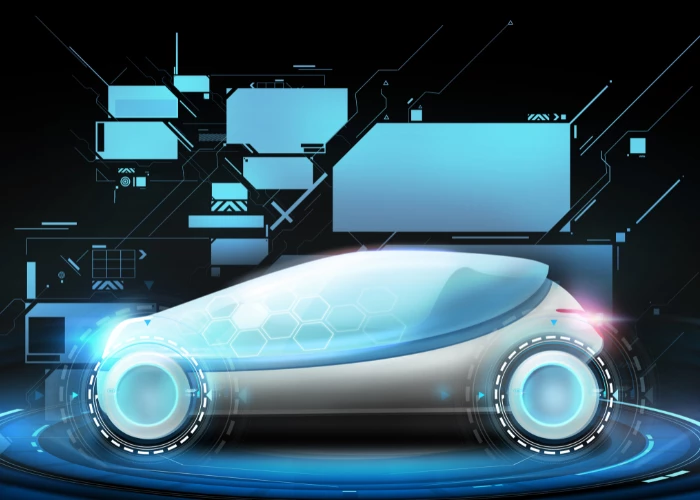Autonomous truck technology - global outlook
Add bookmarkAutonomous vehicle technology continues to develop at pace, and it has the potential to bring sweeping changes to our transportations systems. Much of the focus is on the impact this technology will have on passenger vehicles, but the trucking industry will also experience significant change over the coming decades
The benefits of self-driving trucks barely warrant explanation. Haulage companies with a full fleet of autonomous trucks could transport freight 24 hours a day without the need for a driver. Platoons of trucks could join convoys on our highways and motorways, communicating via V2V technology to conserve fuel and minimize space taken up on the road. Traffic accidents involving trucks could become a thing of the past as self-driving technology improves safety, and logistics could be revolutionized.
Of course, while these ideas are tantalising as concepts of the future of trucking, the industry must deal with the transition to autonomous technology in the present environment. How quickly can autonomous technology be implemented? How will it affect driving jobs? How can safety be verified and what legislation must be introduced? Are semi-autonomous trucks a viable solution? Or just a phase on the journey to full automation? What are the costs of autonomous technology and how do the compare to the potential savings?
US and Europe in race for self-driving trucks
According to a report by the American Transportation Research Institute, ‘Identifying Autonomous Vehicle Technology Impacts on the Trucking Industry’, IHS Automotive estimates that “autonomous truck sales could reach 60,000 annually by 2035 [or] 15% of sales for trucks in the big class 8 weight segment”. The ATRI report also states that there are 3.46 million class 8 trucks on the road in the US, so there is clearly a gap to bridge in terms of full-scale deployment of fully-autonomous trucks
A report by Mckinsey & Company, ‘Delivering change: The transformation of commercial transport by 2025’, predicts that by 2025 at least one in three new heavy trucks globally will have high-level automation technology. The report also estimates that the value of the market will grow from €150 billion to €240 billion in the same timeframe, with truck manufacturer profits rising from €9 billion to €15 billion.
Both major markets are seeing heavy investment in autonomous technology, and the incentives to be first to market with the technology that has the potential to revolutionize commerce is driving competition. The landscapes of development are rather different however, with the traditional large truck manufacturers leading the way in Europe, but start-ups gaining much more attention in America. The US is also well-positioned for testing and development as it benefits from more open spaces and long stretches of roadways. That Daimler was first licensed to test its autonomous trucks in Nevada points to the current difficulties of the regulatory conditions in Europe, although the manufacturer was involved in the European Truck Platooning Challenge and conducted a live test of its Highway Pilot Connect system in Germany last year.
Truck platooning in Europe
The concept of truck platooning is helping to drive legislative change in the EU, where crossborder regulations can prove difficult to navigate. In 2016 six manufacturers - DAF Trucks, Daimler Trucks, Iveco, MAN Truck & Bus, Scania and Volvo Group - took part in the European Truck Platooning Challenge.
The EU project saw convoys of self-driving trucks set off from various locations across the EU to travel to Rotterdam. The Scania group travelled the furthest of the convoys, covering 2,000 km across Sweden, Denmark and Germany on its route. Each truck in the platoon is connected via WiFi and the lead driver determines speed and route. This allows the trucks to travel closer together reducing space taken up on the road, with the convoy controlled by synchronised acceleration and braking. The semi-autonomous trucks only traveled in convoys on motorways in ‘normal’ conditions, and each was still occupied by a driver throughout.
The EU states that truck platooning can realise a 10% fuel saving and therefore bring significant emissions reductions, as well as cost savings. After leading the way in the initial project, the Dutch government has recently outlined plans to introduce multiple truck platoons in 2018 and 2019 across the Netherlands and further afield as part of day-to-day logistics. The plans were outlined in a recent press briefing by Joris Cornelissen, project manager for real life cases, truck platooning in the Netherlands. While acknowledging the challenges of collaboration with EU partners, insurance and logistics, Cornelissen points out that the intention is to progress quickly to real life implementation, beyond trials and concepts.
Volvo self-driving truck tested underground
Carrying out tests on public roads is something Volvo neatly avoided when it demonstrated its latest self-driving truck, taking the vehicle over 1,000 metres underground in the Kristineberg mine.
The specially-equipped Volvo FMX was demonstrated as part of a self-driving project aimed at improving transport flow and safety at the mine in the North of Sweden. The truck covered some seven kilometres, continuously monitoring its surroundings and avoiding both stationary and moving objects. An on-board system also gathers data in order to optimise and coordinate the route and fuel consumption. This type of application is where autonomous trucks may penetrate the market first, away from the glare of public roads and legislative frameworks.
Uber demonstrates autonomous commercial delivery
One of the most interesting developments in the US market in recent months was the news that Uber Technologies had bought autonomous truck start-up Otto, and within months announced the completion of the world’s first real-world commercial shipment with an autonomous truck.
A truck using the technologies developed by Otto travelled a 120-mile stretch of a Colorado Highway with a shipment of Budweiser beer. The test drive was carried out with the support of the State of Colorado, and completed the delivery door-to-door without any human intervention. Cameras, radar and lidar monitored the road and the system controlled acceleration, braking and steering, while a driver sat in the sleeper berth watching over the two-hour journey. Uber has since retired the Otto name and is developing its self-driving business under the Uber Advanced Technologies Group (ATG) brand.
Daimler testing in Nevada and Germany
Daimler was awarded a license to test the autonomous Freightliner Inspiration truck on public highways in Nevada in 2015. The truck benefits from Highway Pilot technology, adapted to American roads, and was the first licensed for operation on public roads
Daimler followed up last year with the announcement that its Highway Pilot Connect system had been approved for testing on public highways in certain areas of Germany. A demonstration of the system was carried out on the A52 Autobahn near Dusseldorf, where three WiFi connected trucks displayed platoon formations which Daimler say can achieve 7% fuel savings. With testing approved on public roads in both the US and Germany, we can expect to see greater developments in vehicle-to-vehicle communication over the coming years.
Singapore autonomous truck platooning project
In another platooning project, Volkswagen and Toyota subsidiary, Scania, began a full-scale autonomous truck project in Singapore in January 2017. The three-year project will see a fleet of trucks transport cargo between ports, with the fleet composed of three autonomous vehicles following one manned truck.
The project has been organised by the Ministry of Transport and the Port of Singapore Authority (PSA Corporation), and will be split into two phases. The first phase will focus on designing, testing and developing truck platooning technologies at Scania and Toyota research centres in Sweden and Japan. The second phase will consist of local trials and development of the technology in Singapore
Summary
The race to implement autonomous truck technology is being played out on a global stage. Certain localities make testing and development easier as legislation struggles to match the pace of innovation, but frameworks will fall into place if the technology is viable and robust. Fully autonomous trucks may still be some years away but platooning is a valuable step towards that goal, and comes with very real benefits in the short term.
Sources
Strategy & Report ‘Trucking to the Future: How GCC Governments can Open the Road for Autonomous Trucks’:
https://www.strategyand.pwc.com/media/file/Trucking-to-the-future.pdf
EU Project: European Truck Platooning Challenge:
https://www.eutruckplatooning.com/News/495554.aspx?
t=Press+release%3a+Dutch+business+community+welcomes+truck+platoons+
Uber & Otto autonomous truck trial:
https://www.uber.com/info/atg/truck/
Daimler Freightliner Inspiration autonomous truck trial:
https://www.daimler.com/innovation/autonomous-driving/freightliner-inspiration-truck.html
Scania autonomous truck platooning trial:
https://www.scania.com/group/en/scania-takes-lead-with-full-scale-autonomous-truck-platoon/
Volvo Self-Driving Truck Demonstration:
http://www.volvogroup.com/en-en/news/2016/sep/news-2297091.html
American transportation Research Institute Report: ‘Identifying Autonomous Vehicle Technology Impacts on the Trucking
Industry’:
http://atri-online.org/wp-content/uploads/2016/11/ATRI-Autonomous-Vehicle-Impacts-11-2016.pdf
Mckinsey & Company report, ‘Delivering change: The transformation of commercial transport by 2025’:
http://www.mckinsey.com/industries/automotive-and-assembly/our-insights/delivering-change-the-transformation-ofcommercial-transport-by-2025
Netherlands Truck Platooning Press Briefing:
https://www.eutruckplatooning.com/News/708424.aspx?t=Truck+platooning%3a+time+for+a+reality+check





















